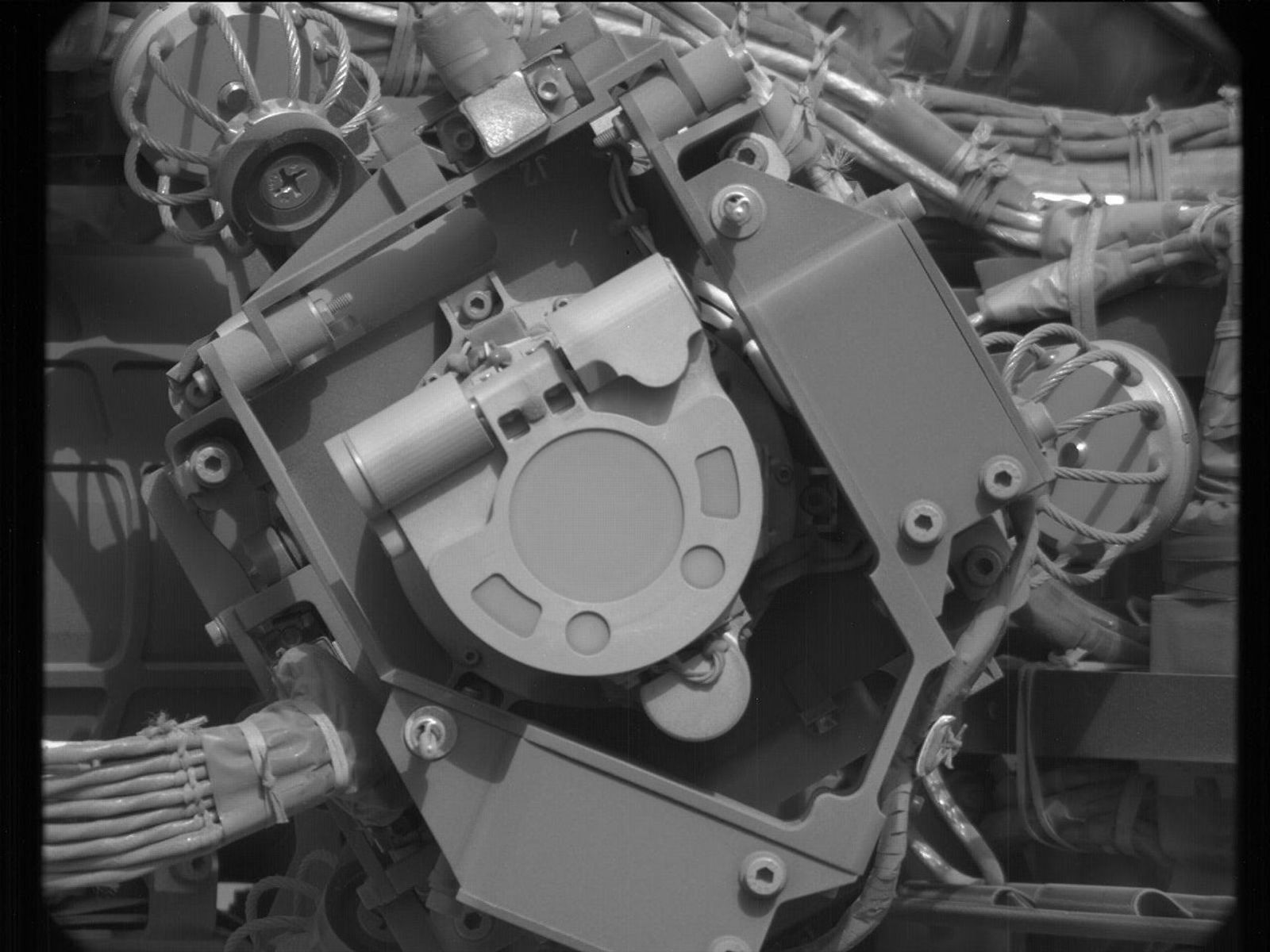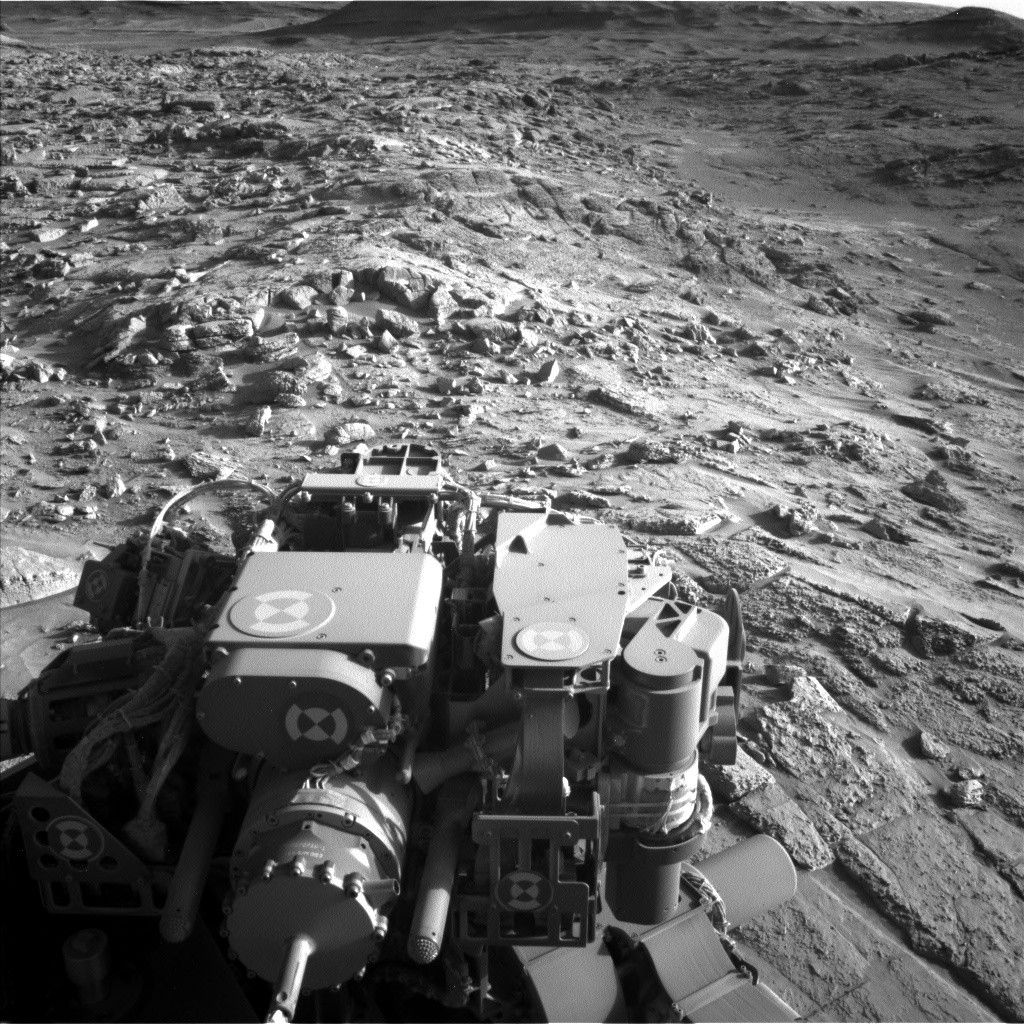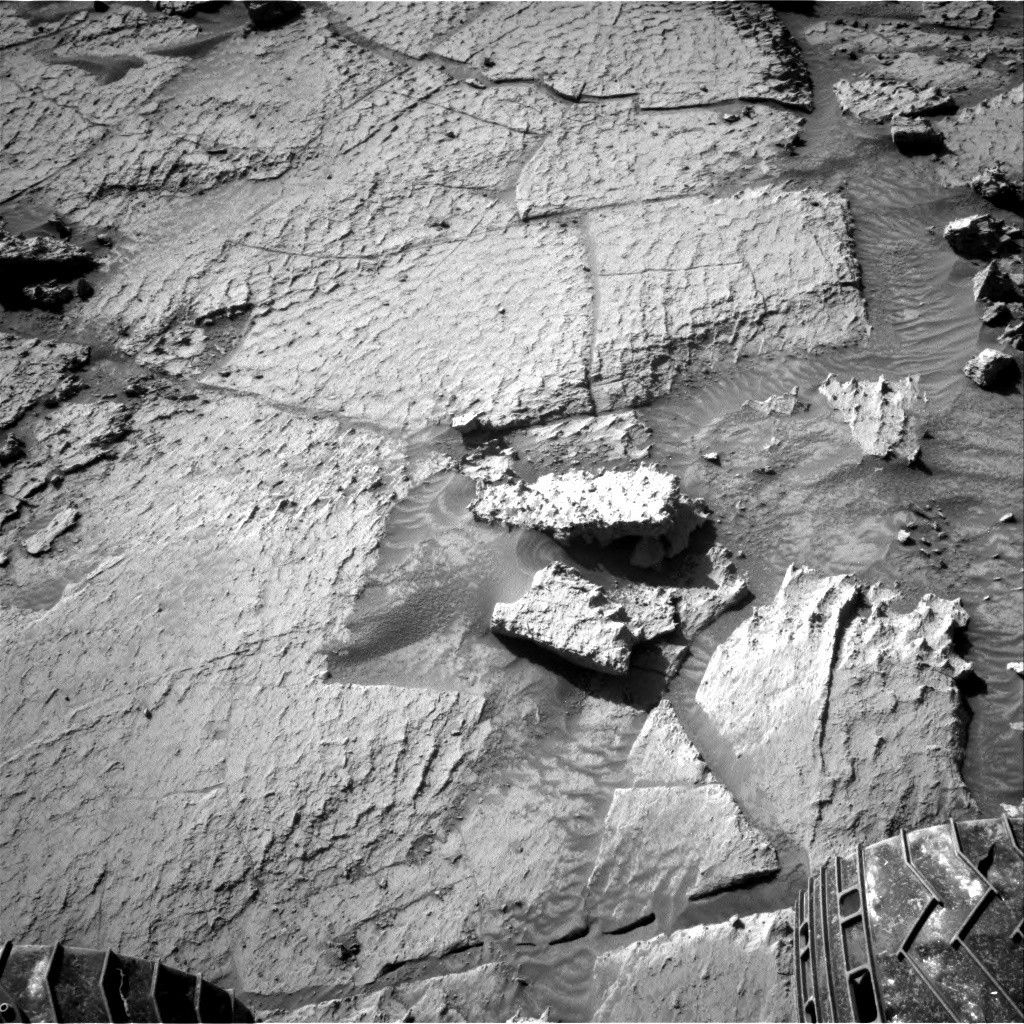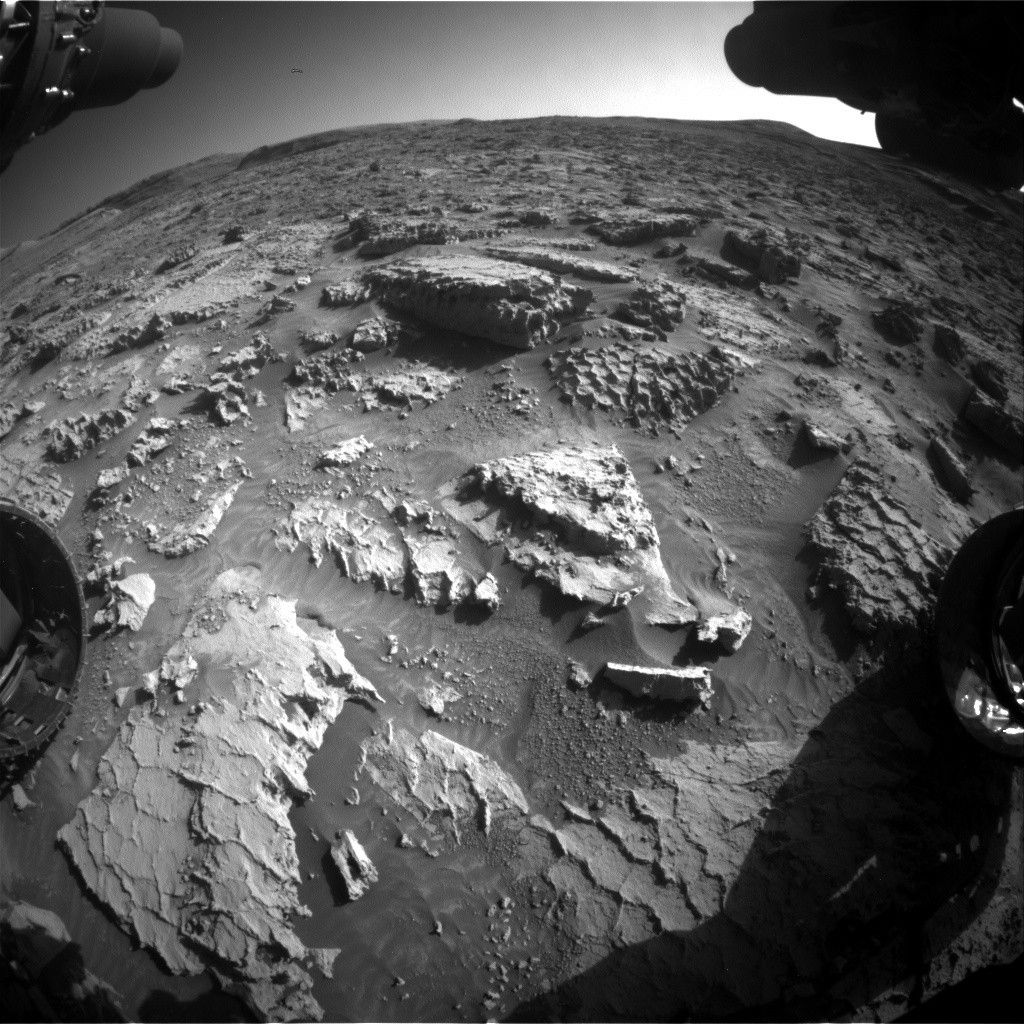- Curiosity Home
- Science
- News and Features
- Multimedia
- Mars Missions
- Mars Home
2 min read

Written by Remington Free, Operations Systems Engineer at NASA's Jet Propulsion Laboratory
Earth planning date: Friday, May 9, 2025
I was on downlink today for SA-SPaH, our robotic arm team. We successfully completed a number of fun arm activities, including a DRT brushing and APXS observations of a bedrock target, and also completed a traverse of about 25 meters (about 82 feet). Exciting!
Today, our uplink team planned three sols of activities. On Sol 4536, we are using the arm to do some inspection imaging of the MAHLI magnet using Mastcam. This magnet allows us to determine whether or not the MAHLI cover has successfully opened or closed. These magnets accumulate a lot of Martian dust particles, so we periodically take imaging to inspect the quantity of dust and get a better understanding of the state of the hardware. I've included above an image of the MAHLI instrument, from our last inspection on Sol 4291. After the magnet inspection, we'll do some more typical arm activities, which include some APXS placements, DRT brushing, and MAHLI imaging on targets of interest.
In this workspace, we are interested in targets characterizing the pale layered sulfate unit we've been driving on, as well as a target in the new ridge-forming unit. Beyond our arm activities, we'll do additional science observations of the surface using Mastcam and ChemCam.
On Sol 4537, we'll focus on driving! Prior to our drive, we'll take some more scientific observations, including a Navcam cloud movie, Mastcam documentation of some geological units, and ChemCam LIBS on a ridge-forming unit. We have then planned a 21-meter drive (about 69 feet) to take us to a bedrock area of scientific interest. We're excited because the terrain looks pretty benign, so we're hoping it all goes smoothly!
Post-drive, we'll take some Mastcam survey imaging of clasts and soils along the traverse. Finally on Sol 4538, we'll aim our focus upwards and take a number of observations of the sky. We'll start with a Navcam large dust-devil survey, a Mastcam tau measurement of the atmospheric optical depth, and a ChemCam passive sky observation to study atmospheric composition. Early the following morning, we'll take some additional Navcam observations of clouds, and complete another Mastcam tau measurement of optical depth.









